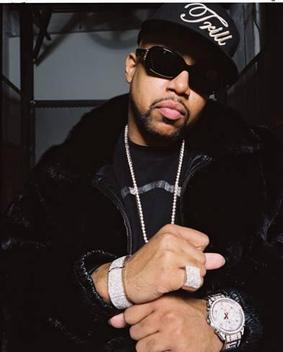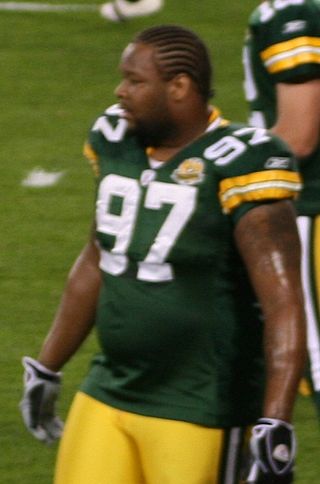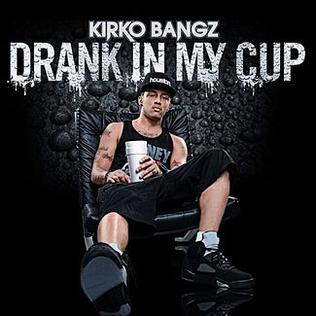Southern hip hop, also known as Southern rap, South Coast hip hop, or dirty south, is a blanket term for a regional genre of American hip hop music that emerged in the Southern United States, especially in Atlanta, New Orleans, Houston, Memphis, and Miami—five cities which constitute the "Southern Network" in rap music.

Cold medicines are a group of medications taken individually or in combination as a treatment for the symptoms of the common cold and similar conditions of the upper respiratory tract. The term encompasses a broad array of drugs, including analgesics, antihistamines and decongestants, among many others. It also includes drugs which are marketed as cough suppressants or antitussives, but their effectiveness in reducing cough symptoms is unclear or minimal.

A drug overdose is the ingestion or application of a drug or other substance in quantities much greater than are recommended. Typically it is used for cases when a risk to health will potentially result. An overdose may result in a toxic state or death.

Chad Lamont Butler, better known by his stage name Pimp C, was an American rapper and record producer. He was best known for his work with Bun B as one half of the hip-hop duo Underground Kingz (UGK).

Promethazine, sold under the brand name Phenergan among others, is a first-generation antihistamine, antipsychotic, sedative, and antiemetic used to treat allergies, insomnia, and nausea. It may also help with some symptoms associated with the common cold and may also be used for sedating people who are agitated or anxious, an effect that has led to some recreational use. Promethazine is taken by mouth (oral), as a rectal suppository, or by injection into a muscle (IM).
Chopped and screwed is a music genre and technique of remixing music that involves slowing down the tempo and DJing. It was developed in the Houston hip hop scene in the early 1990s by DJ Screw. The screwed technique involves slowing the tempo of a song down to 60 and 70 quarter-note beats per minute and applying techniques such as skipping beats, record scratching, stop-time and affecting portions of the original composition to create a "chopped-up" version of the song.

Kenneth Doniell Moore, better known by his stage name Big Moe, was an American rapper from Houston, Texas.

Johnny Ray Jolly Jr. is an American former professional football player who was a defensive end for the Green Bay Packers of the National Football League (NFL) in two separate stints: the first, from 2006 to 2009, and the second, in 2013. He was selected in the sixth round of the 2006 NFL Draft, and played college football at Texas A&M.
The Screwed Up Click is an American hip hop collective based in Houston, Texas, that was led by DJ Screw. Its most notable members include DJ Screw, Big Hawk, Big Mello, Big Moe, Big Pokey, the Botany Boyz, E.S.G., Fat Pat, Lil' Flip, Lil' Keke, Lil' O, and Z-Ro. In addition, Devin the Dude, K-Rino, Lil' Troy, South Park Mexican and UGK are considered to be "Screwed Up Affiliated". Many of the current and former SUC members come from the neighborhoods of South Park, 3rd Ward, Sunnyside, Cloverland, Hiram Clarke and South Acres.

John Edward Hawkins, better known by his stage names Big Hawk and H.A.W.K., was an American rapper from Houston, Texas and a founding member of the late DJ Screw's rap group the Screwed Up Click.
"Sippin' on Some Syrup", sometimes known as "Sippin' on Some Sizzurp", is the second single from Three 6 Mafia's fourth studio album When the Smoke Clears: Sixty 6, Sixty 1. It features UGK and Project Pat. The song samples the synthesizer intro and keyboard instrumental from Marvin Gaye's 1978 song "Is That Enough" from his album Here, My Dear. The song peaked at #30 on the Hot R&B/Hip-Hop Songs chart.

Nicocodeine is an opioid analgesic and cough suppressant, an ester of codeine closely related to dihydrocodeine and the codeine analogue of nicomorphine. It is not commonly used in most countries, but has activity similar to other opiates. Nicocodeine and nicomorphine were synthesized in 1904, and introduced in 1957 by Lannacher Heilmittel of Austria. Nicocodeine is metabolised in the liver by demethylation to produce nicomorphine, also known as 6-nicotinoylmorphine, and subsequently further metabolised to morphine. Side effects are similar to those of other opiates and include itching, nausea and respiratory depression. Related opioid analogues such as nicomorphine and nicodicodeine were first synthesized. The definitive synthesis, which involves treating anhydrous codeine base with nicotinic anhydride at 130 °C, was published by Pongratz and Zirm in Monatshefte für Chemie in 1957, simultaneously with the two analogues in an article about amides and esters of various organic acids.

Codeine is an opiate and prodrug of morphine mainly used to treat pain, coughing, and diarrhea. It is also commonly used as a recreational drug. It is found naturally in the sap of the opium poppy, Papaver somniferum. It is typically used to treat mild to moderate degrees of pain. Greater benefit may occur when combined with paracetamol (acetaminophen) or a nonsteroidal anti-inflammatory drug (NSAID) such as aspirin or ibuprofen. Evidence does not support its use for acute cough suppression in children. In Europe, it is not recommended as a cough medicine in those under 12 years of age. It is generally taken by mouth. It typically starts working after half an hour, with maximum effect at two hours. Its effects last for about four to six hours. Codeine exhibits abuse potential similar to other opioid medications, including a risk of habituation and overdose.

There are many nicknames for the city of Houston, the largest city in Texas and fourth-largest city in the United States. The city's nicknames reflect its geography, economy, multicultural population, and popular culture, including sports and music. They are often used by the media and in popular culture to reference the city.

Oxeladin is a cough suppressant. It is a highly potent and effective drug used to treat all types of cough of various etiologies. It is not related to opium or its derivatives, so treatment with oxeladin is free of risk of dependence or addiction. Oxeladin has none of the side effects which are present when common antitussives, such as codeine and its derivatives, are used. It may be used at every age, as well as in patients with heart disease, since it has a high level of safety and a great selectivity to act on the bulbar centre of cough.

Wockhardt is an Indian pharmaceutical and biotechnology company headquartered in Mumbai, India. It produces formulations, biopharmaceuticals, nutrition products, vaccines and active pharmaceutical ingredients (APIs). The company has manufacturing plants in India, UK, Ireland, France and US, and subsidiaries in US, UK, Ireland and France.
Drank is a soft drink sold in the United States and Canada. It is marketed as an "Anti-Energy" drink which causes relaxation as opposed to a sugar or caffeine jolt.

"Drank in My Cup" is a song by American rapper Kirko Bangz. It is taken from his mixtape Progression 2: A Young Texas Playa. The Sound M.O.B. produced single is his highest-charting song to date and has sold over 1,000,000 copies digitally. The song uses the word 'drank' a number of times as a clear reference to purple drank, a codeine-promethazine cocktail served in Sprite, a drink symbolic of the H-Town hip-hop scene, classically associated with chopped and screwed music. The song is full of references to this music scene, including the slow, relaxed rhythm of the song.

Robert Earl Davis Jr., better known by his stage name DJ Screw, was an American hip hop DJ based in Houston, Texas, and best known as the creator of the chopped and screwed DJ technique. He was a central and influential figure in the Houston hip hop community and was the leader of Houston's Screwed Up Click.
"R.I.P. Screw" is a song by American rapper and singer Travis Scott featuring fellow American rapper and singer Swae Lee. It was released through Cactus Jack, Grand Hustle, and Epic Records on August 3, 2018 as the fourth track from the former's third studio album Astroworld. The song was written by the artists alongside Blair Lavigne, FKi 1st, and Mike Dean, the latter two producing it with Scott. The song serves as a tribute to American disc jockey DJ Screw, who was from Scott's hometown of Houston, Texas and died from a codeine overdose in 2000.


















